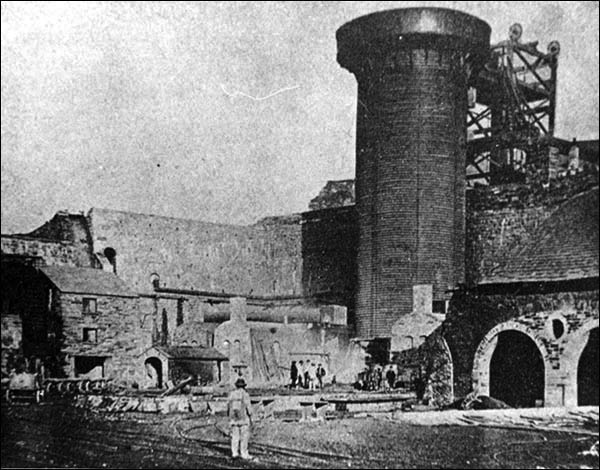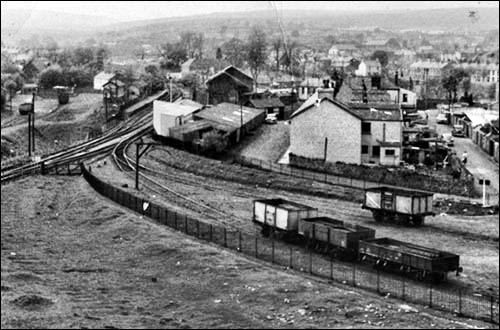Remains of Sirhowy ironworks, Tredegar
This Scheduled Ancient Monument is a rare survivor from the Industrial Revolution. The ironworks opened in 1778, with one blast furnace initially. The raw materials, all sourced locally, were fed into the furnaces from the bank behind. When the furnaces were tapped, molten iron flowed into moulds to harden as basic “pig iron”.
In 1818 the works were bought by Harford, Partridge & Co of Ebbw Vale and from then on supplied pig iron to the company’s Ebbw Vale works via the Harford tunnel. This meant the ironworks never evolved into steelworks, which could have swept away the earlier furnaces (as at the Tredegar ironworks a little to the south).
 A waterwheel powered the ironworks until 1799, when a Boulton & Watt steam engine was installed. Gilbert Gilpin of Wrexham, who worked for the Sirhowy ironworks, had previously been employed at Boulton & Watt in Birmingham and before that was chief clerk to John Wilkinson, the Wrexham ironmaster who made the steam engines’ cylinders.
A waterwheel powered the ironworks until 1799, when a Boulton & Watt steam engine was installed. Gilbert Gilpin of Wrexham, who worked for the Sirhowy ironworks, had previously been employed at Boulton & Watt in Birmingham and before that was chief clerk to John Wilkinson, the Wrexham ironmaster who made the steam engines’ cylinders.
There were five blast furnaces here by the time Abraham Darby & Co bought the business in 1844, kickstarting another round of innovation. A hot blast system, perfected by George Parry of Ebbw Vale in 1850, enabled the furnace tops to be enclosed, making the process more efficient.
The last major upgrade came c.1875 when two furnaces at the northern end of the row made way for a self-standing blast furnace, which was much taller than the earlier furnaces and dominates the old photo. Raw materials were raised to the furnace top on an ingenious lift, as explained in the video you can see via the link below.
A circular mound marks where the new furnace stood. This is “furnace bear” – a mixture of slag, iron and other waste which had to be cleared periodically from the bottom of furnaces.
 In the late 1870s a web of tramways still connected the ironworks to quarries and coalmines to the southeast, where you now see the Sirhowy community woodland. Another tramway brought stone from Trefil, to the north. A connection to the main railway looped 180 degrees past Nursery Terrace and Railway View. The site included coke ovens, brickworks and a smithy, where the poet Myfyr Wyn learned his trade as a blacksmith. His sculpture stands at the ironworks site.
In the late 1870s a web of tramways still connected the ironworks to quarries and coalmines to the southeast, where you now see the Sirhowy community woodland. Another tramway brought stone from Trefil, to the north. A connection to the main railway looped 180 degrees past Nursery Terrace and Railway View. The site included coke ovens, brickworks and a smithy, where the poet Myfyr Wyn learned his trade as a blacksmith. His sculpture stands at the ironworks site.
Iron smelting here ended in 1882 but the site was used for production of coke and lime, finally closing in 1905. Railways on the site, including the Nursery Terrace connection (pictured in 1950 with Sirhowy station on the left), continued to serve Graham’s Navigation Colliery to the south until after the First World War.
Thanks to Tredegar Community Archive for the old photos and to Blaenau Gwent County Borough Council
Postcode: NP22 4QP View Location Map
Sirhowy ironworks video
Tredegar Community Archive website



